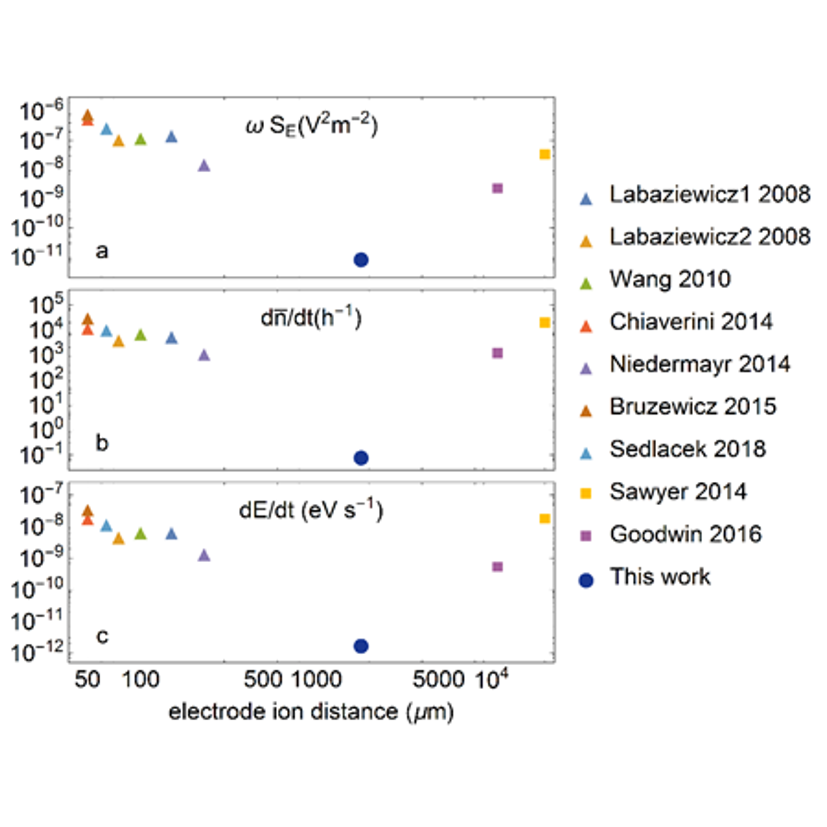Today we report on the first explicit measurement of cyclotron quantum heating rates in a cryogenic Penning trap. We demonstrate that the scaled electric field noise in our spin-analysis trap, an essential instrument in our 1.5 p.p.b. measurement of the antiproton magnetic moment, is much lower than observed in other ion trap experiments. It corresponds to a heating rate below 0.1 quanta per hour and a radial energy stability on the peV/s-level.
Cyclotron transition rates were measured by employing the continuous Stern-Gerlach effect, which couples the radial quantum states to the axial motion of a trapped antiproton. By evaluating the axial frequency stability and comparing it to noise driven random walks in the cyclotron motion, we extract absolute transitions rates of 6(1) cyclotron quanta per hour and a heating rate below 0.1 quanta per hour. For the electric field noise in our trap, we obtain an absolute noise spectral density at the 7.5(3.4)×10−20 V2 m−2 Hz−1-level and a scaled noise density below 8.8(4.0)×10−12 V2 m−2. Compared to Paul-trap and room temperature Penning-trap experiments, the scaled field noise in our cryogenic Penning trap setup is by more than two orders of magnitude smaller.
To understand the origin of these electric field fluctuations, we conducted heating rate measurements at various particle orbits, corresponding to different positions in the trapping potential. Based on these measurements we identified residual trap potential fluctuations as the dominant source of electric field noise in our experiment. Effects of anomalous heating imposed by fluctuating patch potentials and surface contaminations were not resolved within the measurement precision.

